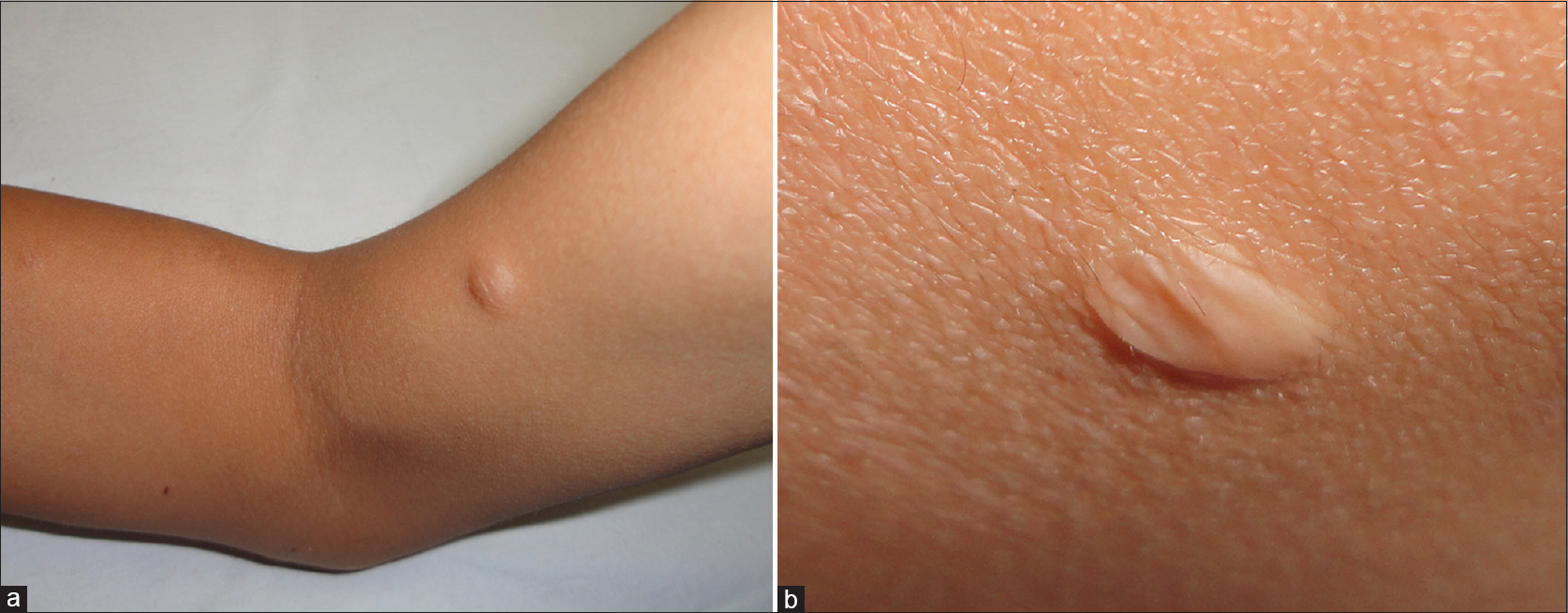Translate this page into:
Lepromatous leprosy masquerading as anetoderma in a boy
2 Department of Histopathology, Postgraduate Institute of Medical Education and Research, Chandigarh, India
Correspondence Address:
Tarun Narang
Department of Dermatology, Venereology and Leprology, Postgraduate Institute of Medical Education and Research, Sector 12, Chandigarh - 160 012
India
| How to cite this article: Razmi T M, Narang T, Chatterjee D, Dogra S, Saikia UN. Lepromatous leprosy masquerading as anetoderma in a boy. Indian J Dermatol Venereol Leprol 2020;86:176-177 |
An adolescent presented with asymptomatic loose outpouching of the skin, without any antecedent lesions. These well-defined atrophic plaques were distributed on the upper arm, thighs and neck [Figure - 1]a and [Figure - 1]b. General examination revealed infiltrated earlobes and symmetrical peripheral nerve thickening without associated sensory impairment. There were no hypopigmented/erythematous patches. Nerve conduction study revealed sensory-motor polyneuropathy. Slit-skin-smear from one of the atrophic lesions from the left upper arm demonstrated acid fast bacilli with a bacillary index of 5+. Histopathology of the same lesion showed peri-adnexal and peri-neuro-vascular lymphohistiocytic collections [Figure - 2]a, along with degeneration of collagen and elastin [Figure - 2]b and positive-modified Ziehl-Neelsen staining. Syphilis, human immunodeficiency virus and anti-phospholipid antibodies screening were unremarkable. Anetoderma in polar lepromatous leprosy is extremely rare. In the absence of reactions to suggest neutrophil-mediated elastolysis, elastolytic enzymes produced by lesional macrophages may be the reason for anetoderma.
 |
| Figure 1: (a) Anetodermic lesion on the arm. (b) Close-up image of one of the thigh lesions |
 |
| Figure 2: (a) Normal epidermis and peri-vascular and peri-appendageal lymphohistiocytic collection with altered connective tissue fibers in the dermis (hematoxylin and eosin, ×100) (b) Collagen and elastin degeneration in the dermis(elastic van Gieson, ×200) |
Declaration of patient consent
The authors certify that they have obtained all appropriate patient consent forms. In the form, the legal guardian has given his consent for images and other clinical information to be reported in the journal. The guardian understands that names and initials will not be published and due efforts will be made to conceal patient identity, but anonymity cannot be guaranteed.
Financial support and sponsorship
Nil.
Conflicts of interest
There are no conflicts of interest.
Fulltext Views
3,558
PDF downloads
2,490





